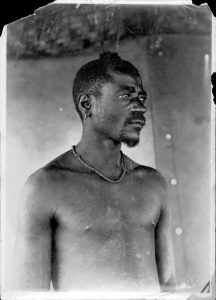Quelle: https://visual-history.de/2024/04/29/agde-bildsprache-der-besatzer/
Escaping the War Horror:
Introduction
Byron Metos is a Greek collector based in Thessaloniki, whose interest focuses on war photography and more specifically on the photography of the two World Wars in Greece. Part of his collection is titled Balkan und Griechenland (Balkans and Greece) and comprises photographs taken mostly by German soldiers and officers, though also including those by itinerant photographers, during the years of the Nazi Occupation in the Balkans, which have originated from photo albums of German soldiers.
During the postwar era, these were acquired by an officer who had served in Greece as a member of the Health Service of the German army. A pensioner in a small town in what was then West Germany, many years after the War, he decided to trace his own route through the war by adding the photographs of his fellow soldiers to his own photographic souvenirs – a process he pursued until the end of his life, spending much time in tracing his former fellow soldiers or their relatives. After his death, the collection passed to his daughter, who, a year later, sold the section relating to Greece, namely almost three thousand (3,000) photographs, to Byron Metos, expressing, however, her wish to retain her family’s anonymity.
The following paper focuses on the part of the Metos Collection that refers to Thessaloniki. Roughly numbering more than 800 prints, this particular part of the collection formed the subject of an exhibition organized in February 2016 at the Museum of Byzantine Culture.
[...]
Quelle: https://visual-history.de/2022/06/07/escaping-the-war-horror/
The Camera as a Witness: Photography and Memory
In light of the recently opened exhibition „The Persecution of Jews in Photographs. The Netherlands 1940-1945“ in Amsterdam (National Holocaust Museum), the NIOD Institute for War, Holocaust and Genocide Studies kindly invites you to the symposium “The Camera as a Witness: Photography and Memory”. This is a one day symposium during which the photograph as a historical source is examined. In a period of time in which the visual image is gaining increasing significance, it is important to be aware of the ways in which these images affect our perception of (historical) events. From various viewpoints, specialists in the field of history and memory studies will reflect upon the role of images on our understanding of the past. They discuss amongst others the documentary force and subjective reality of photography in the context of war and the violation of human rights. Furthermore, the use of photographs in post-war trials across the world and the impact of photographs on the responses of later generations to the trauma of the first generation – ‘postmemory’ – will be examined.
The Persecution of Jews in Photographs. The Netherlands 1940-1945: Foto aus der NIOD-Bilddatenbank Beeldbank WO2 – NIOD
[...]
Quelle: https://www.visual-history.de/2019/03/16/the-camera-as-a-witness-photography-and-memory/



